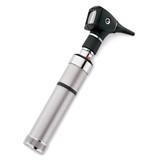Considering getting that botox to lessen the anti-aging process? Here is something you need to know first before getting that beauty procedure!
Let’s begin by talking about “What exactly is injected into my skin?” Botox is a protein made from Botulinum toxin, which the bacterium Clostridium botulinum produces. Derived from C. botulinum bacteria, which are present in many natural settings, including soil, lakes, forests, and the intestinal tracts of mammals and fish. It’s a toxin, but when doctors use it correctly and in small doses, it can have benefits. It has both cosmetic and medical uses.
What exactly is injected into my skin?
Botox is a neuromodulator injected into the skin to temporarily paralyze the muscles that cause wrinkles. It works by blocking the release of a chemical called acetylcholine, which is responsible for transmitting signals from the nerves to the muscles. When the muscles are paralyzed, they are unable to contract, which can help to smooth out wrinkles and fine lines.
Botox is typically injected into specific areas of the face, such as the forehead, around the eyes, and between the eyebrows. It is commonly used to improve the appearance of wrinkles caused by facial expressions, such as frown lines, forehead lines, and crow's feet. So how often do you need botox? The effects of Botox typically last for three to four months and can be repeated as needed.
What are the side effects of Botox?
Depending on the location being treated, botulinum toxin injections can have different side effects. Most problems are minor and become better within a day or two. Possible negative effects of Botox include
-
Bruising, redness, swelling, or pain at the treatment site
-
Flu-like symptoms
-
Headache
-
neck ache
-
uneasy stomach (indigestion)
-
a brief lowering of the eyelids (ptosis)
-
Redness or irritated eyes
There is also a risk of more severe side effects, although these are rare. These may include:
-
Difficulty speaking or swallowing
-
Difficulty breathing
-
Chest pain
-
Heart attack or stroke
How often do I need botox?
The recommended frequency for this treatment is typically once every four months for the majority of patients. You might require your injections more frequently or less frequently, though, as everyone has a distinct body. How long your results will persist may depend on a few different things. How long your effects will last could be determined, for instance, by the areas of your face that are being treated, the depth of your dynamic wrinkles, and how expressive your facial muscles are.
What does it feel like?
Patients report that it "barely hurts," and many think the benefits are worth any discomfort to the point that they would even consider getting it done more than once. You will experience a mild stinging at the injection site as the injection is being administered. The use of an ice pack or topical ointment helps lessen this.
What do I need to do to ensure my botox treatment is safe?
Botulinum is a potent neurotoxin, and it should only be used under the supervision of a qualified healthcare professional. It is essential to discuss any potential risks and side effects with your healthcare provider before undergoing treatment with Botox. They can help you weigh the potential benefits and risks and determine whether Botox is right for you.
It must be administered by a qualified healthcare professional, such as a registered nurse, to ensure the safety and effectiveness of the treatment.
Nurses are trained in administering injections and are knowledgeable about the proper techniques and precautions to take when administering Botox. They are also trained to recognize and manage any potential side effects or complications that may arise.
Additionally, nurses must follow strict guidelines and protocols when administering medications, including Botox. This helps to ensure that the drug is used safely and appropriately.
Using safety syringes can help to ensure the safe and effective administration of Botox and reduce the risk of accidental needle sticks and the transmission of infections.
Click here to read more about Numedico’s Safety Syringes and information you can share with your healthcare professional. https://numedico.com/products/cosmetic-care



















